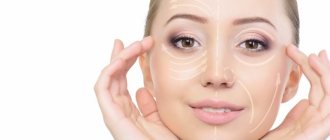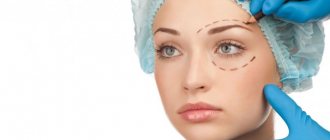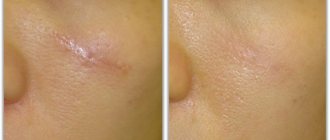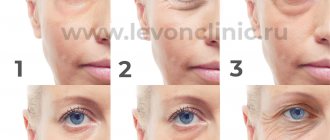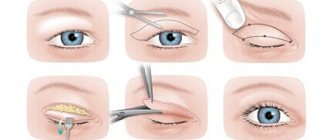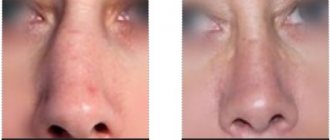- Scars (scars) - history and anthropology
- History of scar treatment
- Classification of wounds
- Phases of wound healing and scar formation
- Scar classification
- Factors influencing scar formation
- Therapeutic methods for treating scars
| |
Mechanism of action
Freezing causes the formation of ice crystals in the extracellular and intracellular spaces and blood stasis, leading to anoxia and tissue necrosis. The most effective methods include rapid freezing and slow warming. Repeated, faster freezing procedures damage tissue more than prolonged freezing. The easiest way to imagine cryodestruction is in the form of controlled frostbite. Mild frostbite causes mild pain, redness, swelling of the skin and the appearance of mild peeling after a few days. When using cryodestruction methods, certain areas of the body are subject to necrosis, the level of which is controlled.
Liquid nitrogen - good or bad for our skin?
In modern medicine, the procedure for removing various skin formations using LIQUID NITROGEN, the so-called CRYODESTRATION or tissue freezing, has become widespread.
The essence of the procedure is as follows: liquid nitrogen is applied to the formation using a special cotton swab or an aerosol jet. The whole procedure takes from 1 to 3 minutes. The tissues are frozen to temperatures of -190 °C, the treated area turns white, hardens and loses sensitivity, the blood supply is disrupted, the tissues of the area are damaged, and then regenerate over the next 3–6 weeks.
Impact on the wart with a special “reed” with liquid nitrogen
Freezing a wart with liquid nitrogen, as seen in the first seconds after the procedure
The advantages of this method are quite prosaic:
- accessible procedure, low cost,
- no stitches or dressing changes required,
- fast and virtually painless,
- no special instruments or sterilization are required.
But there are also disadvantages :
It is impossible to remove the formation so that it is possible to obtain a section of skin for histological examination. At the time of treatment, we cannot know how deeply the tissues have frozen, so the formation may not go away, in which case a repeat procedure will be necessary. But there is also “the other end of the stick”: with excessive contact of nitrogen with the skin during the procedure, there is a very high risk of getting a cold “burn”, which is accompanied by the appearance of a painful bubble at the site of exposure (in some cases it may contain blood), and it is necessary will then be opened, leaving the tire behind. The process is not for the faint of heart, not for everyone.
I am sure that whoever experienced this method on himself, endured this pain during healing, and as a result did not get the expected result - the formation did not go away or recurred, will never (if it is possible to use other, more advanced and controlled methods of removal, even more expensive ) will not recommend him to friends.
To be honest, I think this method has already become obsolete, despite its widespread use, it is not that good. After several unsuccessful attempts to use it, most patients still come to us for laser removal, with already grown disturbing huge and permanent formations, a widespread warty process, ring-shaped warts (when they were cauterized in the center, but remained on the sides, because the papilloma virus is aggressive responds with aggression, therefore actively thickens the thickness of this ring).
When I do not recommend using cryodestruction:
- To remove bulky skin formations (such as keratomas, papillomas, fibroids...), as a rule, the discomfort associated with healing after the procedure is enormous, and the formations “sat” in their places and remain, they do not go anywhere even after healing, but the surrounding the skin takes a long time to recover. Believe me, it is much easier to remove with a laser, everything is removed for sure and immediately, nothing remains on the skin except the wound, there will be no painful hemorrhagic blisters, the healing process will be minimal in duration, the inflammation of the wound is much less pronounced and goes away very quickly.
- This method is strictly prohibited for removing pigmented skin tumors (nevi), since partial freezing can lead to their malignancy.
In what cases should you try cryotherapy:
- For viral warts (especially plantar warts). In order for a wart to go away, it is enough to create extreme conditions for the skin on which it is located, to give it, so to speak, stress. Liquid nitrogen will help us! In response to freezing, the body increases its antiviral defenses, and the wart resolves itself without any scarring. That is, for this you do not need to burn it out completely, as is the case with the above formations (keratomas, papillomas, etc.), only a small impact is enough. To increase the effectiveness of this procedure, I recommend preparing the wart in advance by reducing its thickness using baths and cleaning its surface. I’ll say right away that this method is not effective for all patients; for some, the immune system is activated, and for others it is not.
- Well, when I am FOR liquid nitrogen, it is its use in cryomassage procedures, cryopilling, in cryosaunas - these are really cool worthwhile procedures that affect the tone of our blood vessels and the body, improving the quality of the skin, by normalizing and improving blood supply, nourishing the skin, but their benefits for us are not limited to this... But this is a separate topic for conversation, I will write about this later. . .
Cryomassage
In the cryosauna
In the cryosauna
So, it’s up to you to choose the cryotherapy method for removing formations or any other!
Take care of yourself! Health is our greatest value.
Be healthy and happy!
Oncodermatologist Olga Nikolaevna Vyshar.
Useful article? Repost on your social network:
Technique of the procedure
There are several ways to use refrigerants. Swabs of various sizes are dipped in liquid nitrogen and applied to the scar to freeze it. When using a larger swab, more coolant is taken in, and the effect is achieved faster and to a greater depth. With the aerosol method, liquid nitrogen can be sprayed from special thermoses through the tip. The degree of freezing depends on the size of the tip, the pressure in the thermos, the distance to the scar and, of course, the duration of freezing. When working with a neoprene tip, the flow of liquid nitrogen is limited and more concentrated freezing is ensured.
Probes are also used for freezing. The probe is a metal rod that is cooled with a coolant and applied to the scar. Typically, the size of the probe corresponds to the area of the scar. The probe comes in various diameters - from a few millimeters to the size of a hollow copper round door handle. The disadvantages of the method are that it requires a large number of probes of different sizes and configurations.
Typically, one, two or three freeze-thaw cycles of 10-30 seconds are sufficient to achieve the desired effect. Treatment should be repeated every 20-30 days. Particular attention should be paid to the short duration of liquid nitrogen applications to avoid the appearance of reversible hypopigmentation. Cryotherapy can be painful and cause depigmentation. The most effective effect on the scar is provided by cryodestruction in combination with corticosteroids (Kenalog-40, Diprospan).
Scar removal: what is the pathology?
To carry out the procedure, it does not matter how the scar was obtained - trauma, careless handling of sharp objects, burns, as a result of a medical operation (including as a result of a cesarean section). However, the type of scar is important. There are four of them:
● normotrophic. This is a small, smooth scar that does not stand out tactilely against the background of healthy skin. In terms of removal, this is one of the most convenient options;
● hypo- or atrophic. The thickness of the skin in this place is much less than that of ordinary skin. Therefore, the scar quickly loses its shape, spreads in width and looks unattractive;
● hypertrophic. Such a scar contains an increased dose of connective tissue, so it feels dense and thick. Tactilely, the scar often rises above the healthy surface. In addition, it differs in color;
● keloid. The most difficult case that needs to be removed as soon as possible after its occurrence. A distinctive feature is the ability to grow and increase in size, which is why many people confuse a keloid scar with a tumor and consult an oncologist.
It is also common to distinguish scars by age. Young scars are those that were received no later than 3 months and no earlier than 5 years ago. Mature scars appeared on the body more than 5 years ago. Fresh damage is much easier to remove. However, old scars can also respond to cryotherapy, although several sessions may be required.
Cryotherapy will remove any scar, including keloids, but it is recommended to consult a doctor before visiting a cosmetologist. After all, the number of sessions and their duration depends on the type and size of the defect.
Complications
Side effects of cryodestruction are extremely rare.
Sometimes during treatment there may be slight pain, hyperpigmentation, moderate skin atrophy, the appearance of blisters and blisters, and weeping. This is a normal reaction to the procedure. But if redness appears at the site of the scar, it swells, becomes hot to the touch and painful, this may indicate the development of infection in the wound area. In this case, the patient should immediately contact his doctor. Bleeding usually does not occur unless the patient is receiving anticoagulants. [/td]
What to choose: cryodestruction or laser?
Both procedures can quickly and almost painlessly rid you of tumors. However, cryodestruction is only effective when it comes to small moles or warts.
If the tumor is large in size or has deep roots, then it is better to give preference to a laser. Cryodestruction is not used if the tumor is located on the mucous membranes.
So the laser in this case is the only possible option. As for the cost, laser procedures will cost a little more.
